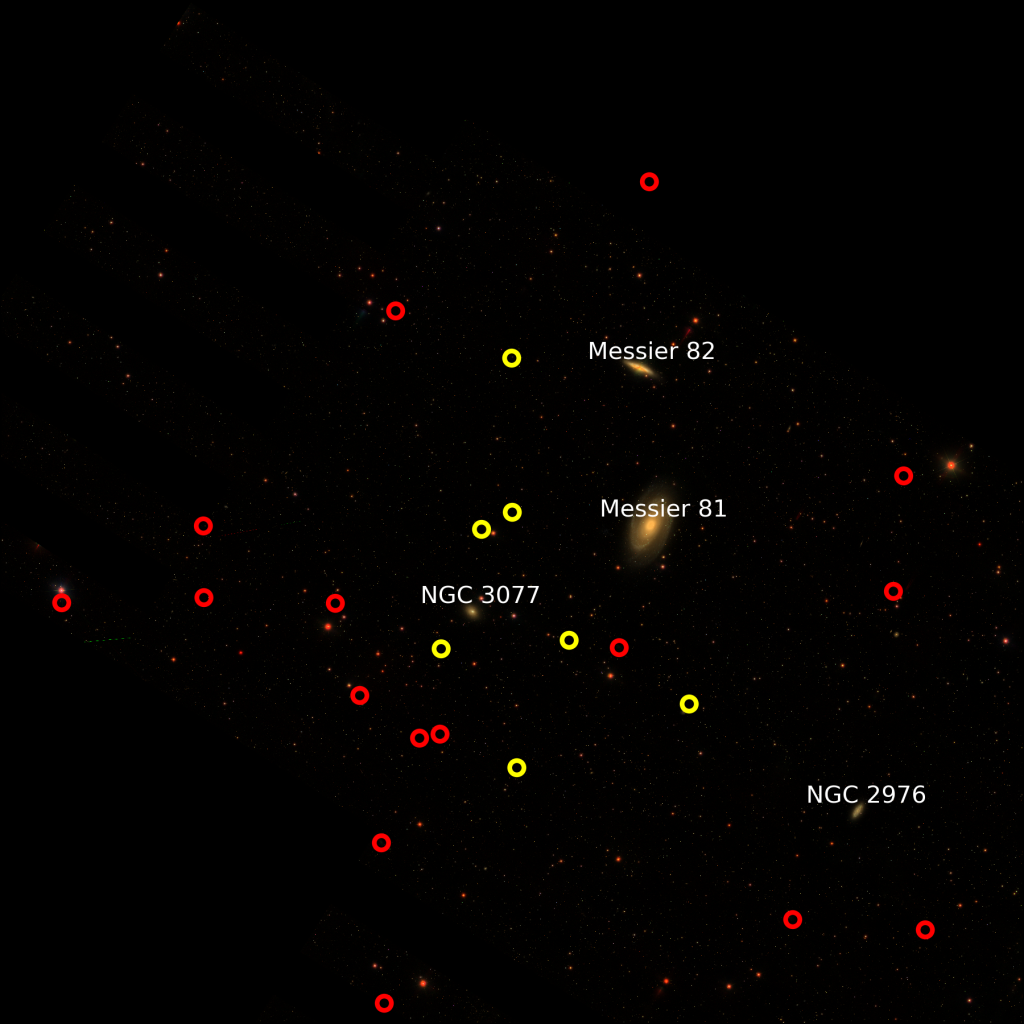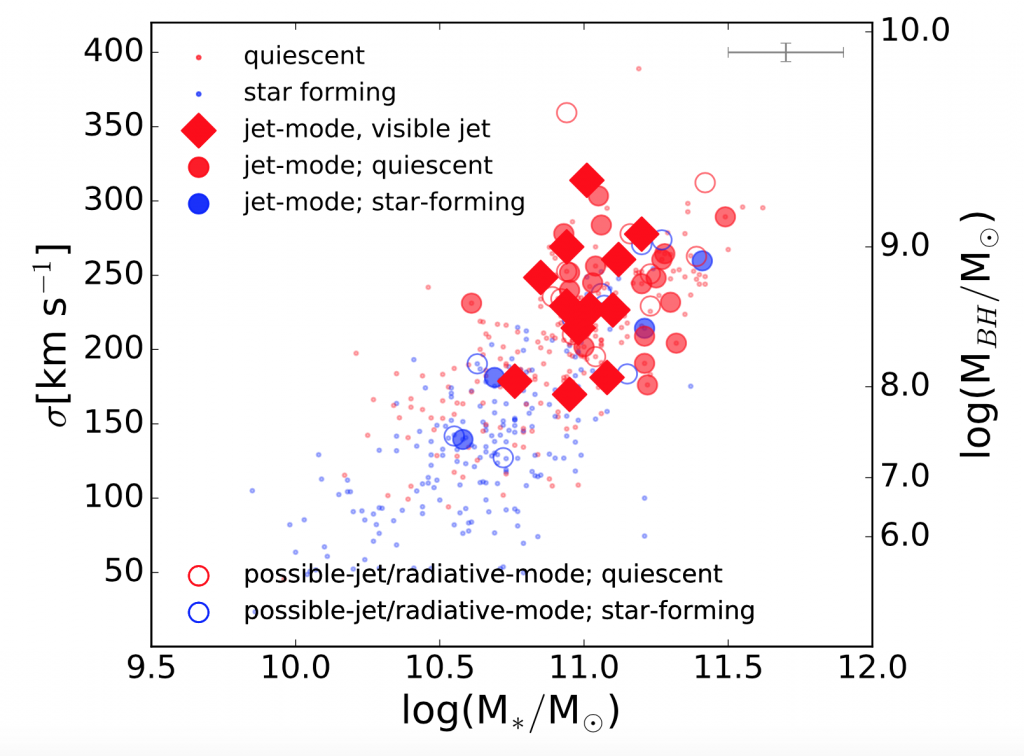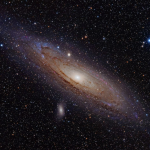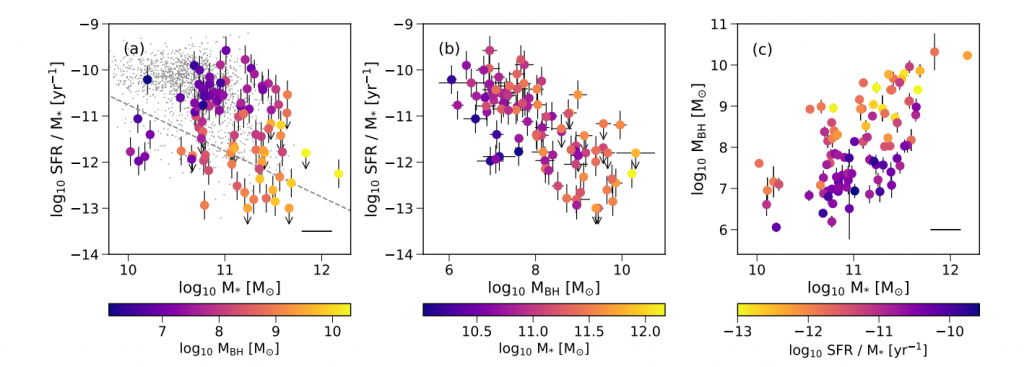One of the most persistent problems that has bothered me over the years is the difficulty of actually using a stellar halo to determine the properties of the most important merger to have affected a galaxy. There have been a number of problems – convincing ourselves that the parts of the halo we use are accreted in origin, understanding how many satellites make important contributions to the halo, and assembling the required resolved star datasets to allow careful measurement of halo properties. Using GHOSTS in concert with galaxy formation models (mostly Illustris), we realized that by focusing on the outer parts of a stellar halo along the minor axis one is dominated by accreted stars, and that most of those accreted stars in practice come from the one most massive satellite to have been accreted. In this way, we are able to quantify the likely mass and metallicity of the most massive satellite to have merged with a given central galaxy.
Richard D’Souza and I decided to use this method on the exquisite dataset collected over the years by the PAndAS, SPLASH and Brown et al. teams to determine the mass, metallicity and accretion time of the Andromeda Galaxy’s most massive accretion in this paper (or here for the arXiv version). Andromeda has a huge, metal-rich stellar halo, and this alone strongly constrains the range of cosmologically-acceptable merger histories to those involving a massive, metal-rich accretion in the last several Gyr. By comparing the observations with large and metal-rich simulated stellar halos from Illustris, we realized that the inner stellar halo, the giant stellar stream and M32 were all likely to be associated with this large merger event, and that the properties of these three observational features were best reproduced by a single merger with a ~1-3×1010 MSun disk galaxy around 2Gyr ago. This galaxy, the progenitor to M32 (which we imaginatively named M32p – it even has its own Wikipedia entry now, not our doing!), used to be the 3rd largest galaxy in the Local Group before its untimely demise. Interestingly, the inferred merger history is in excellent accord with a completely independent analysis by Hammer et al. which used the properties of the M31 disk in concert with the giant stellar stream to come to the same conclusion of a large, recent merger for M31 – two independent analysis, using completely different constraints, coming to a very similar conclusion.

The Andromeda galaxy shreds the large galaxy M32p, likely giving rise to M32, the inner stellar halo and M31’s giant stellar stream. Credit: Richard D’Souza. Image of M31 courtesy of Wei-Hao Wang. Image of stellar halo of M31 courtesy of AAS/IOP.
This merger history has a range of important implications. Firstly, this lends strong support to an interpretation of M32 as a tidally-stripped core of a previously much larger system, we believe a star-forming disk galaxy. Second, the disk of M31 survived a large minor, or perhaps even a major merger in the last 2Gyr – this has important implications for our understanding of disk thickening and survival. Importantly, he bulge pre-dates this interaction – M31’s large bulge is seemingly unassociated with M31’s largest merger. This lends further support to the notion that galaxy merging and bulge formation are not trivially associated with each other. Finally, this work paves the way for applying this method to other galaxies, allowing us to empirically chart out what the long-term effects of mergers are on galaxies.
This work really captured Richard’s and my imaginations over the last year or so, and was tremendous fun, and it was exciting to see that it captured the imagination of lots of other people, and was widely covered in the blogosphere (astrobites, Discover magazine), amateur astronomical press (e.g., Sky and Telescope, Astronomy), radio (TalkRADIO in London, Stateside on Michigan Radio/NPR) and wider press (e.g., Smithsonian Magazine, CNN, Guardian, Detroit News, UM press release).













